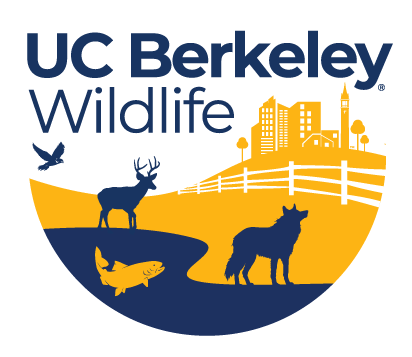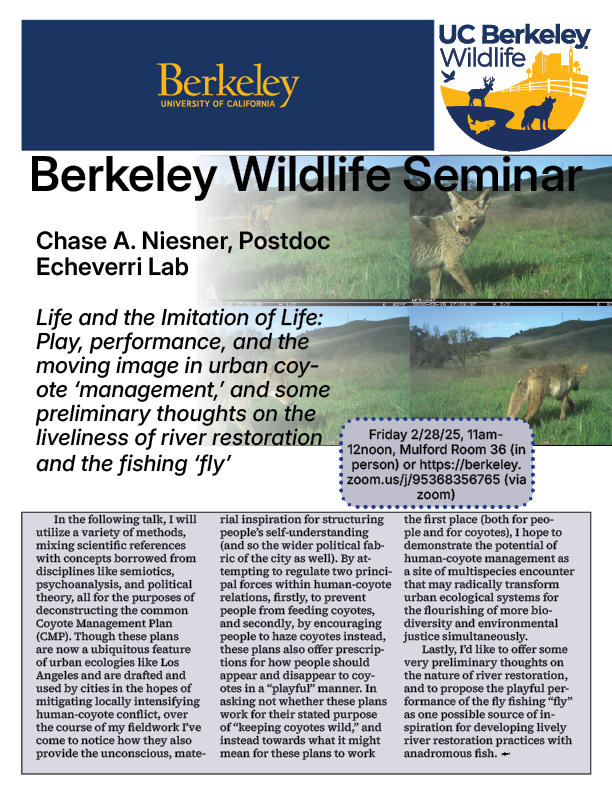Life and the Imitation of Life:
Play, performance, and the moving image in urban coyote ‘management,’ and some preliminary thoughts on the liveliness of river restoration and the fishing ‘fly’
In the following talk, I will utilize a variety of methods, mixing scientific references with concepts borrowed from disciplines like semiotics, psychoanalysis, and political theory, all for the purposes of deconstructing the common Coyote Management Plan (CMP). Though these plans are now a ubiquitous feature of urban ecologies like Los Angeles and are drafted and used by cities in the hopes of mitigating locally intensifying human-coyote conflict, over the course of my fieldwork I’ve come to notice how they also provide the unconscious, material inspiration for structuring people’s self-understanding (and so the wider political fabric of the city as well). By attempting to regulate two principal forces within human-coyote relations, firstly, to prevent people from feeding coyotes, and secondly, by encouraging people to haze coyotes instead, these plans also offer prescriptions for how people should appear and disappear to coyotes in a “playful” manner. In asking not whether these plans work for their stated purpose of “keeping coyotes wild,” and instead towards what it might mean for these plans to work the first place (both for people and for coyotes), I hope to demonstrate the potential of human-coyote management as a site of multispecies encounter that may radically transform urban ecological systems for the flourishing of more biodiversity and environmental justice simultaneously.
Lastly, I’d like to offer some very preliminary thoughts on the nature of river restoration, and to propose the playful performance of the fly fishing “fly” as one possible source of inspiration for developing lively river restoration practices with anadromous fish.

